The Great Auratone Roundup (…Including Reviews of the Avantone, Reftone and Behritone Studio Monitors) [UPDATED 2023]
Why Auratones still matter: Little monitors can make your mixes sound big.
Big, glossy, expensive studio monitors conspire to reassure you: “See? Isn’t sound just… So great? Aren’t you glad you have all of this nice studio gear?”
But unlike larger, full-range speakers, the classic Auratone Super Sound Cubes would never lull you into that kind of false sense of security. Like an all-too-honest best friend, they tell it to you like it is: “Listen, man. There’s only so much midrange to go around. What’s important in this mix? Stand up and tell me. Make a decision. Dammit, for once in your life, choose!”
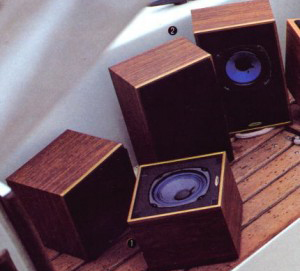
The small size and limited bandwidth of Auratones is a feature, not a bug. A number of reissues attempt to rekindle their magic. Which ones do it best?
I’m absolutely in love with Auratone speakers and have been for years. When I started leaning on them heavily, every element of my mixes improved:
Midrange clutter cleared up. Vocals and snare drums found their level, and kick drums and bass guitars finally learned to get along. The central sounds in my mixes became bold, memorable and dynamic, while supporting ones found sensible places to live.
Auratones taught me how to do all that, and they’ve done the same for countless engineers.
If there is one piece of counter-intuitive advice I can give about mixing, it’s that your finished mix will tend to sound like the inverse of your speakers.
It’s simple really. If you listen on dark, murky-sounding speakers, your mixes are that much more likely to come out sounding thin and bright. If you listen on tight, brittle-sounding speakers, your mixes will tend to take on a character that’s muddy and veiled. And if you listen on big, impressive-sounding beasts with an extended top and impressive bottom end- well- it just might be the reason your mixes sometimes come across as dull, bland, cluttered, grey – homogenized.
On the other hand, if you learn to rely on smaller speakers—ones that push the midrange forward—you may be surprised to hear just how massive and well-crafted your final results are when you fold up to the big speakers.
For decades, the Auratone 5C Super Sound Cubes have been one of the most popular choices to fill this niche in the studio. Now, as the cost of these long-discontinued monitors continues to rise on the vintage market, it’s no surprise that several companies have begun coming out with their own reissues. But which ones do it best?
We gathered all the major versions together in one room for a comprehensive listening test. In a moment, you’ll read a review of the new Auratone-branded reissues, the Avantone MixCubes, the Reftones, and the “Behritone” C5a Monitors by Behringer and find out how they stacked up alongside the original.
But first, we’ll explore why this simple design has stayed relevant during the roughly 40 years since it was first introduced. It may not be why you think.
The Original Auratone 5C Super Sound Cube
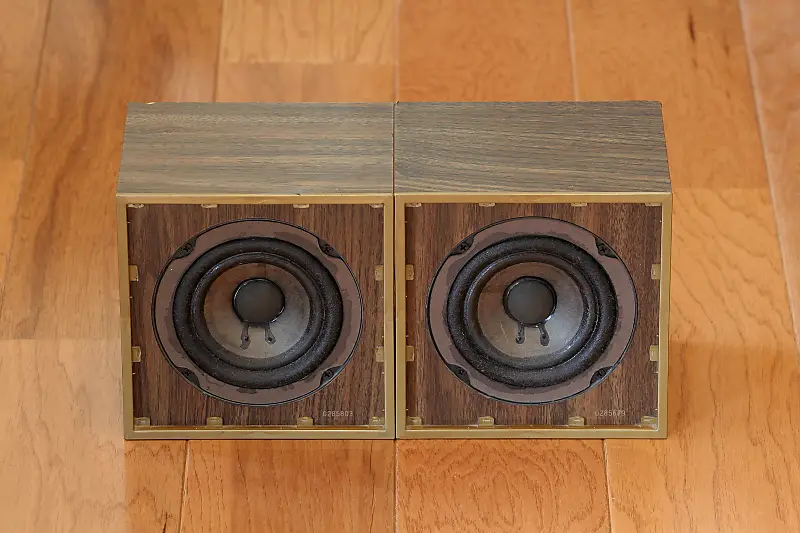
Original vintage Auratones can still be found on the used market for fair prices due to the availability of new alternatives. Look for used deals on Reverb.com.
Plenty of engineers have their own favorites when it comes to small, “real-world” speakers, and that’s a good thing. Auratones aren’t the only ones worth using. But they do some things that not every set of small speakers is capable of.
Even if you’re in search of your own alternative model of personal “grot-boxes”, it’s important to know what made them such a successful design.
First, although Auratones don’t reproduce extreme highs and lows, the mid-range frequencies that they do deliver are remarkably well-balanced, ideal for making crucial mix decisions. The original Auratones are very accurate in the midrange, but they’re not razor-flat. This too is a feature, not a bug—once you learn to use them. One of their biggest selling points is that they have a relatively narrow sweet spot that discourages you from mixing too bright or too dark.
Secondly, they use a single woofer, so no mid-range frequencies are lost to the crossover circuity or phase-shift inherent in speakers that add a tweeter to the design.
Third, and perhaps most importantly, the Auratones’ sealed, single-woofer design means they’re free of strange resonances in the low-end (or anywhere else). Along with their focus on the mid-range, it’s this transient accuracy and lack of troublesome resonances that makes them indispensable in helping mixers craft a bottom end that works anywhere.
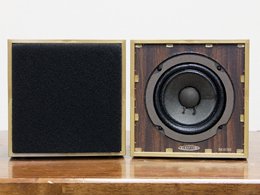
Used Auratones can be found with or without speaker covers and even outboard amplifiers included. Search for deals on Reverb.com.
Finally, a nice byproduct of having a speaker design that doesn’t go super deep is that the mixer is not fooled by the low end inconstancies in their own listening environment.
The types of rooms most producers and engineers work in aren’t very flat at all down below 100Hz or even 200Hz. Being able to take these frequencies out of the equation for some of your listening can help you avoid being mislead by awkward resonances in your room—which are likely to be more significant than resonance issues in your spearkers themselves.
Contrary to the common wisdom, the Auratones’ greatest strength was never in their ability to approximate an average listener’s system. Very few homes, cars or TV sets ever had speakers that sounded much like these. Like the ubiquitous Yamaha NS-10, Auratones work because they help lead mixers in the right direction, and because they remind us to focus on the choices that really matter.
Sure, the speakers have their detractors. But in my experience they tend to be either audiophile consumers or dilettante engineers with more capital than capacity at their disposal. Every great mix engineer I’ve ever met knows the value of small grot-boxes like these. If they use nicknames like “horrortones” and “awfultones”, it’s usually with affection, not derision.
Original Auratones are often available on the used market for something like $200-$300 shipped. They have actually become relatively more affordable in recent years because of the new availability of high quality remakes. Speaking of which, let’s have a look at those remakes now.
Most Faithful: The Reissued Auratone 5c Super Sound Cubes
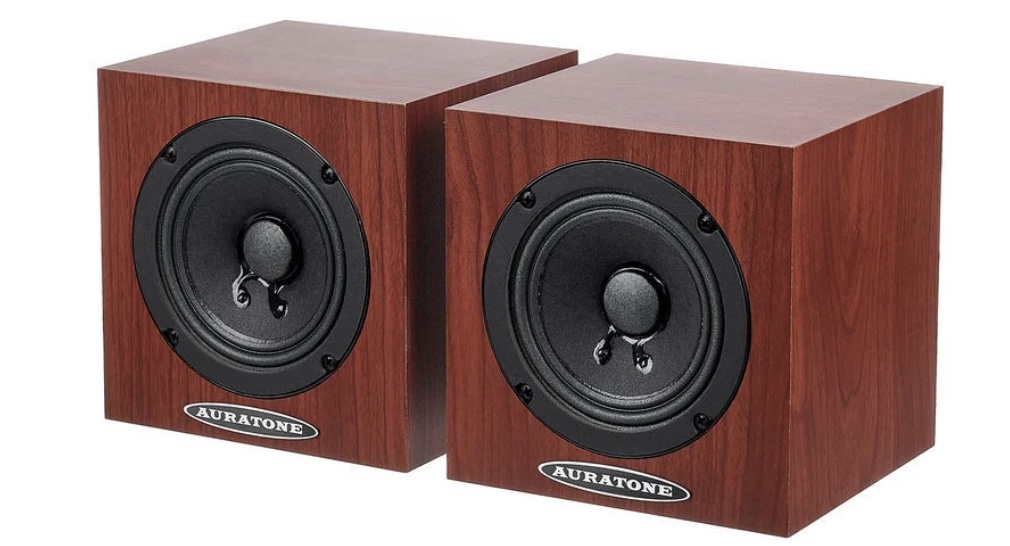
The reissued Auratone 5C Super Sound Cubes
Buy it new on Sweetwater, B&H, Thomann, or Amazon. Look for deals on Reverb.
Of all the remakes now available, the Auratone-branded reissues are the most true to the original to my ear. That’s either a good thing or a bad thing, depending on who you ask!
For my tastes—as a true lover of the original model—this was a strong selling point. If I had to part with my original pair, and I wasn’t allowed to get a vintage pair as a replacement for some reason, these are the ones I’d be likely to choose.
But just because they would be the best modern fit for me, doesn’t necessarily mean they’d be the best fit for you. I like them so much not because they sounded “the best” out of the bunch. It’s because they sounded the closest to the version of the Auratones that I’m already so familiar with and have learned to work on so well. I’d have to do the least re-learning to be successful on these.
Compared to the originals, these speakers go a little bit lower and a little bit higher, with slightly flatter midrange. This is something we’ll see crop up again and again in the newer remakes. Newer speaker components are just “better” on paper than what was available in the 1970s and 1980s.
To their credit, the Auratone reissues were able to stay the truest to the sound and feel of the originals while still increasing bandwidth and transparency somewhat.
If you want a modern speaker that sounds closest to a vintage pair without buying a vintage pair, this is probably the model to choose.
If you are not already accustomed to the originals however, or want an even fuller range or prettier sounding small speaker, a couple of the other successful remakes go even further in the direction of increasing bandwidth and making the speakers sound more pleasing.
At $400 street price for a passive pair, and $750 with a power amp included, they are more expensive than the originals are on the used market, and more expensive than some of the others on the list. But if you want something close to the originals with better consistency and quality control—and a new speaker warranty—the higher price may well be justified.
Best Value: The Avantone MixCubes
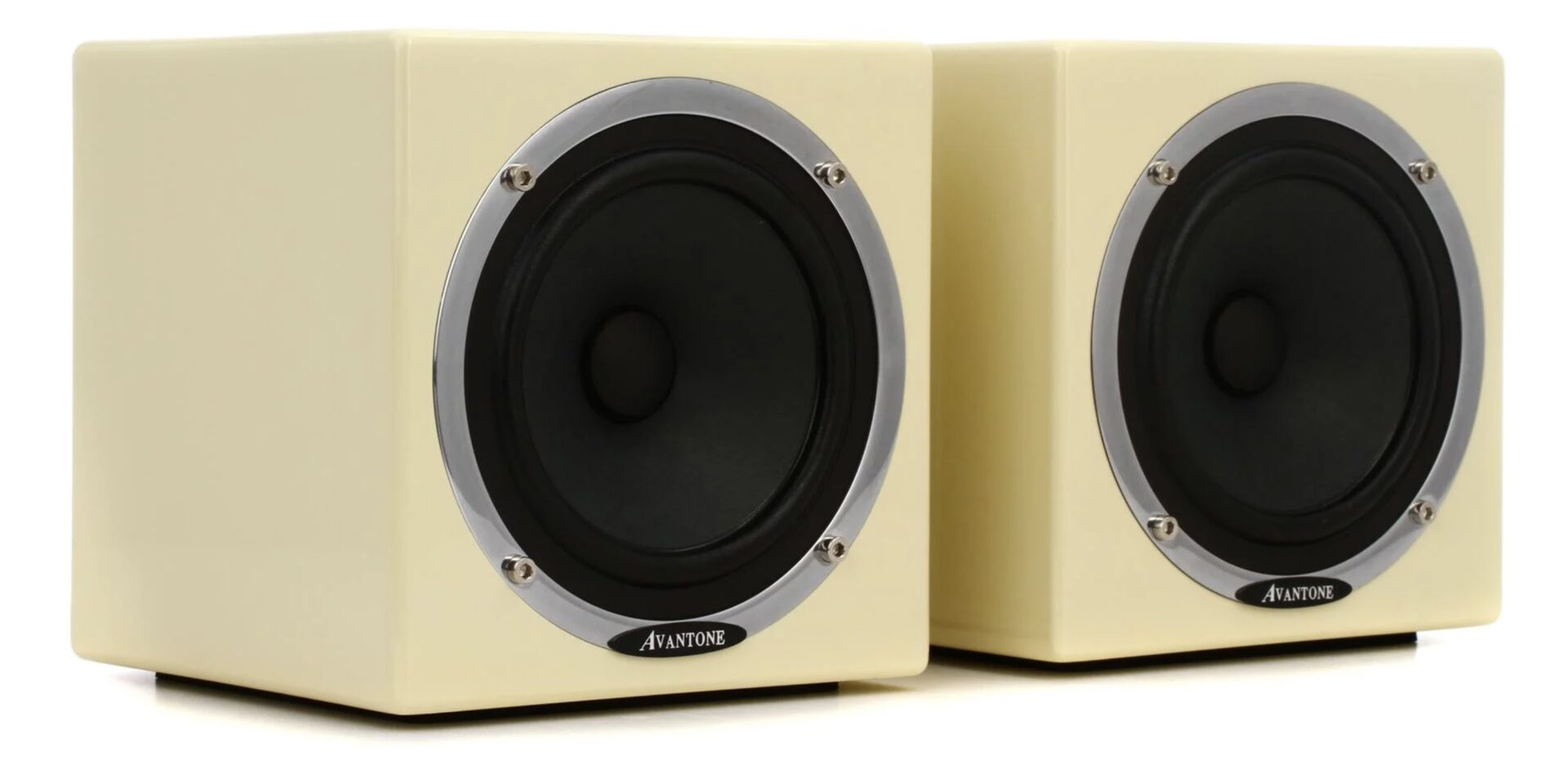
The Avantone MixCubes
Buy it new on Sweetwater, B&H, Thomann, or Amazon. Look for deals on Reverb.
Avantone introduced the first remake of the Auratones to become successful, and you’ll find them in a lot of studios today because of it. To a whole generation of producers and audio engineers, these are simply the version of the cube-style monitor that they know and love.
Unboxing these speakers, I was impressed by their visual presentation and build quality right off the bat. I’ve used the Avantone MixCubes in many studios, and I’ve seen photos of them from all angles, but I had never noticed just how well-detailed they were until I got up close and personal, holding one in my hand.
From the magenta heat sink in the back to the lettering on the front; from the custom power supply to the fleckless paint job, the active MixCubes are truly beautiful little speakers. It just a more attractive and solid build than the original vintage models, no question about it.
Although I initially thought a $499 street price seemed a little steep for such a small and simple design, finally examining them in person made me feel differently about it.
At that price, they come with the power amp built in, making them a very attractive value relative to other options.
Once you start to factor in that the passive versions sell for about $259 (comparable to a used pair of originals on eBay, and $150 less than the other new passive versions) it starts to seem like even more than a fair buy.
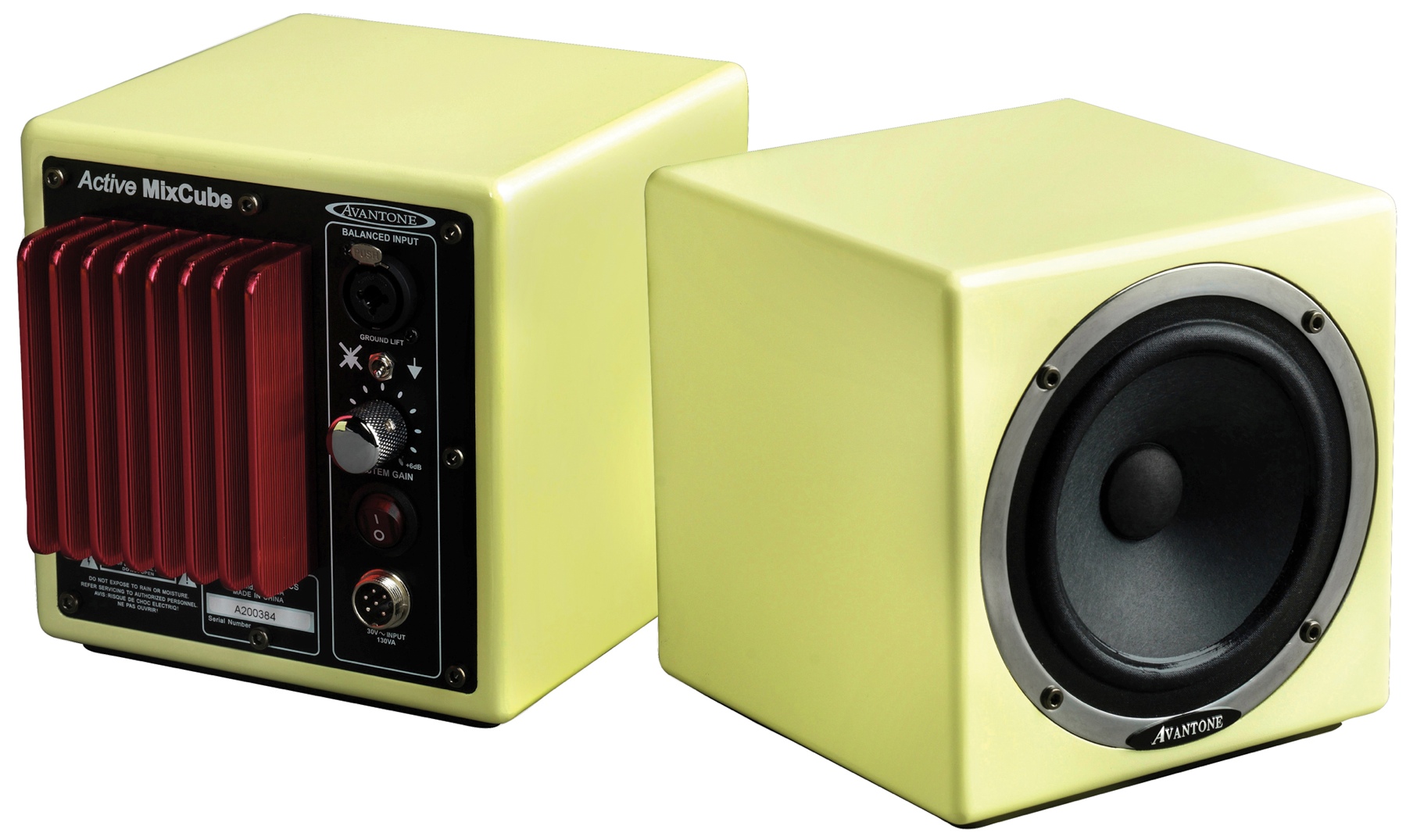 But what I was most interested in was the sound. The Avantones were designed to fill the niche of the original Auratone, but they’re not a straight remake. They go deeper, higher, and were designed to have an even flatter midrange response.
But what I was most interested in was the sound. The Avantones were designed to fill the niche of the original Auratone, but they’re not a straight remake. They go deeper, higher, and were designed to have an even flatter midrange response.
The Avantone MixCubes arguably sounded more “neutral” and broadband than either the originals or the re-issues from Auratone. I could probably listen to them all day without feeling like I was missing too much. Side-by-side with the originals, they sounded more relaxed, more open, and more extended. For their part, the original vintage Auratones sounded more upfront, and maybe a little “pinched” by comparison.
On paper, that probably sounds like a pretty clear vote for the Avantone MixCubes. But in practice I’m slightly less certain. One of the biggest selling points of the original Auratones is that they make a cluttered midrange sound, well, really really cluttered.
This constrained quality in the midrange on the original version guides the mixer toward reducing wasted space so that each instrument can make an impact. That comparatively “pinched” sound of the original Auratones isn’t necessarily a bad thing. If you push the upper midrange frequencies on them too hard, they’ll go from “pinched” to “strident” pretty fast, effectively penalizing you for mixing too bright and grating.
I like these newer speakers by Avantone. If I have one criticism, it’s that I’m afraid they would let me get away with too much relative to the originals. Thankfully, they still have the excellent transient response of the originals, and I’m sure their unique idiosyncrasies can be learned just as well.
Most Accurate: The Reftones
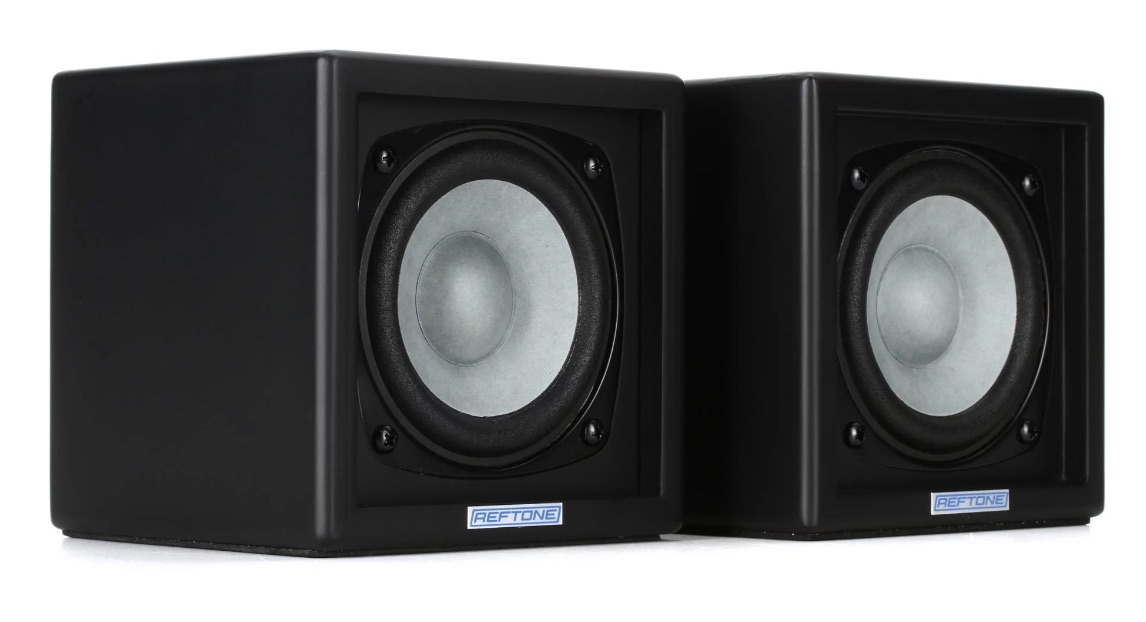
The Reftones
Buy it new on Sweetwater, B&H, Thomann, or Amazon. Look for deals on Reverb.
While they don’t go quite as deep or as high as conventional 2-way studio monitors, they are designed to go deeper and higher than any of the other Auratone remakes available.
I was surprised at quite how low these speakers went for their size! And fortunately, because of the entirely closed, non-ported design, the low end that was there was remarkably flat and free of resonances.
There is truly useful information here in good abundance down around 90Hz. So you still get the benefit of clean low end, and the benefit of chopping off the very lowest frequencies below 80Hz or so that can be the most misleading in small rooms and other questionable environments.
At $400 for a passive pair, they are priced similarly to the Auratone re-issues. They also provide the option of a $600, bluetooth-equipped powered pair, just a bit more expensive than the Avantones. For those who plan to use these on the road as a primary speaker for remote setups, a sturdy $99 carrying case is available.
If you are not sold on the idea of perfectly mimicking the original’s idiosyncrasies, or owning an unnecessarily band-limited speaker, these could be the cube monitors for you. They are the Auratones for people who don’t really care for the limitations and quirks of the original Auratones. They offer surprisingly good, uncompromising performance in a small, simple package, that still has some of the unique and central benefits of the originals.
For my own use, I prefer sticking to a speaker that approximates the useful set of tradeoffs found in the originals offer even more closely. But I have tremendous respect for Reftone for creating an alternative take on this design that is decidedly and intentionally more modern in performance.
Most Affordable: The “Behritone” C5a
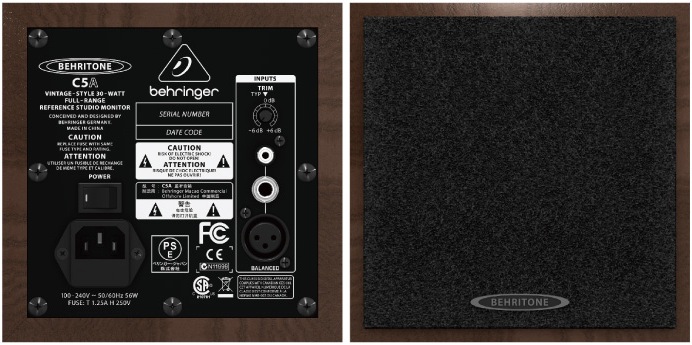
The Behringer c5a monitor
Buy it new on Sweetwater, B&H, Thomann, or Amazon. Look for deals on Reverb.
In sound, The Behritone C5a was the opposite of the Avantone in some ways. Where the Avantone sounded more open and extended than the originals, the Behritone 5Ca sounded even thicker, darker, and more “closed-in”.
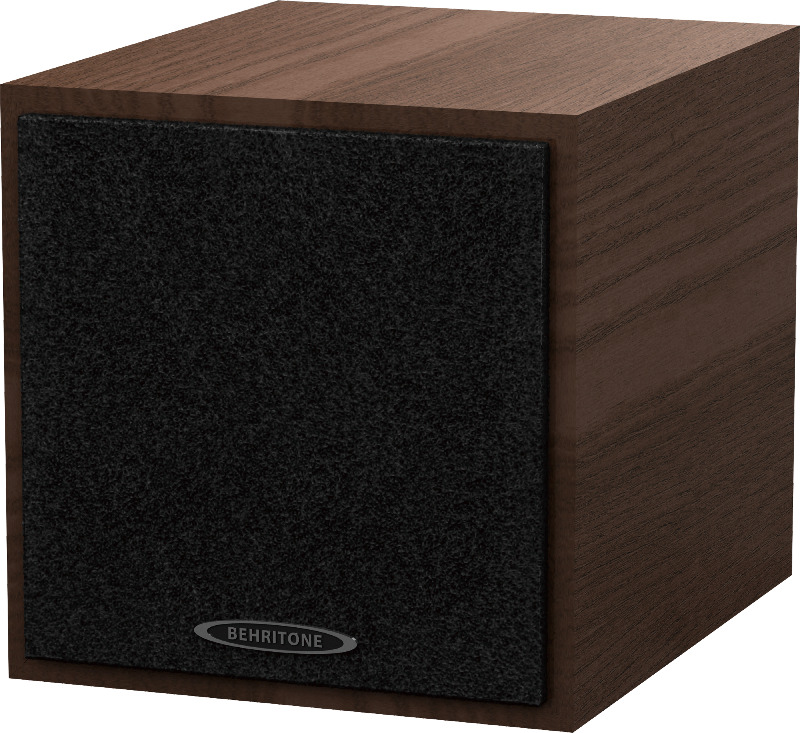 It also lacked the super-clean transient response of both the Auratones and Avantones. Kick drums, snares, and bass guitars sounded a little sluggish by comparison, and I have my suspicion this has to do with the larger cabinet size.
It also lacked the super-clean transient response of both the Auratones and Avantones. Kick drums, snares, and bass guitars sounded a little sluggish by comparison, and I have my suspicion this has to do with the larger cabinet size.
On top of that, the lower midrange was a little tubby and exaggerated for my tastes. I fear it would cause me to chase down and carve out resonances and midrange clutter that weren’t actually issues, potentially leading to more anemic-sounding mixes.
On the other hand, for those who fall prey to mixing far too dark (even on Auratones) the Behritones could be especially helpful. And at only a $100 street price for a single speaker, it’s miles better than not having a decent mono reference speaker at all.
To be honest, I’m not sure what the status of these speakers is currently, as they are still offered on the Behringer website, but none of the stores they link to seem to carry them. They can be found fairly cheaply on the used market as well, making them a potentially useful and cheap secondary reference if you learn them.
Final Analysis
It’s important to remember that the differences I’ve written about here aren’t night-and-day, but a matter of degree. Each of these speakers is successful in it’s own way:
The Avantone for its clear, neutral and extended sound; the Reftone for increasing the range of the speaker as far as it can reasonably go, the Behritone for being incredibly cost-effective; the original Auratone for having an extremely narrow sweet-spot that encourages mix choices that have been proven to translate well; and the Auratone reissues for most closely resembling the sound of the vintage model while also improving performance and bandwidth.
The world can be a murky and uncertain place, and most beginners’ mixes reflect that. Auratones though, will never lie to you. They can’t. They’ll always steer you in the right direction. They’ll always make you choose between what’s important and what’s not.
Speakers like these are also responsible for two of the most satisfying moments that can happen in a mix session. First is the moment when, listening to playback and finally feeling that the mix sounds amazing, you suddenly realize that you’re still listening to those tiny boxes.
Then, there’s that second, even more satisfying moment, when you finally switch up to the big speakers and hear how your mix really sounds. It’s always more uplifting, and ultimately, more reliable than doing the reverse.
PS: For those of you who like to DIY, you can also build your own Auratone clone.
Justin Colletti is a mastering engineer who writes and talks about music, sound, and how we make it.

The original version of this article was published February 6th, 2012. We have updated and republished it to help our newer readers.
Please note: When you buy products through links on this page, we may earn an affiliate commission.







[…] Source link […]